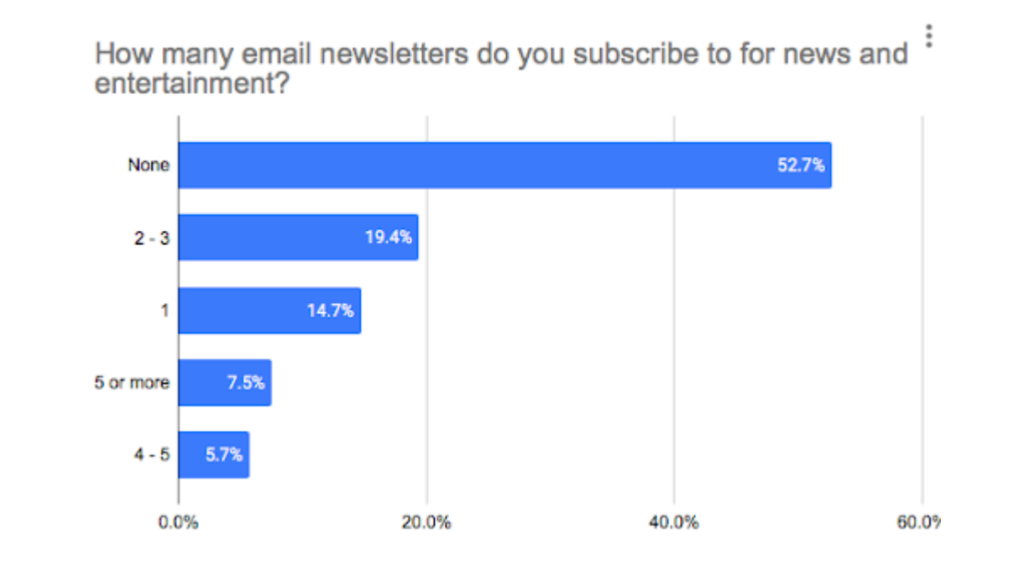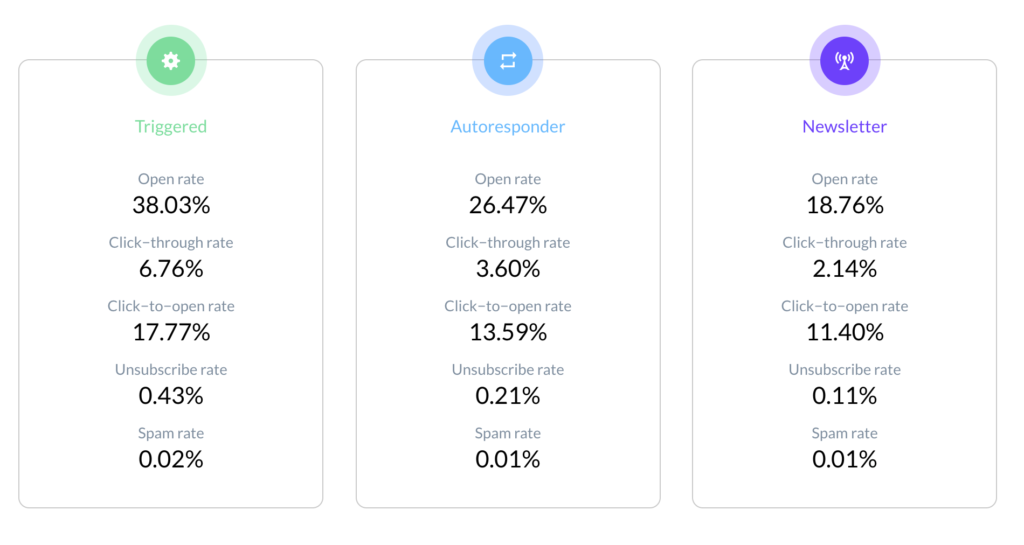The term “eNewsletter” may sound so early 2000’s but the email marketing channel is still alive and well. Despite the many avenues now available for marketing and the popularity of social media, email is a channel that can’t be ignored and the eNewsletter is a champion in email marketing.
eNewsletters are particularly valuable because they keep your brand front-of-mind for customers while allowing you to provide valuable content and information. Sent just once a month, they can engage subscribers and keep them in your funnel longer.
If you’ve let your eNewsletter fall to the bottom of the marketing list, here’s why you need to reconsider its place in your marketing toolbox.
Keep Reading: MailerLite vs. Mailchimp: Which Should You Choose?
Email Use is Still High
This year marks fifty years since the first email was sent and email marketing has come a long way. However, people still remain dependent on email communication for personal and professional reasons.
As of March 2021, the open rate average across all industries is almost 17 percent and the average click-through rate is higher than 10 percent according to Constant Contact. While these numbers vary by niche, they prove that a large part of your audience is engaged in your email messaging.
Outside of work emails and personal communication, Americans still enjoy receiving eNewsletters. According to The State of Email Newsletters: 2021 And Beyond, a survey of 9,300 consumers, nearly half of all consumers subscribe to at least one email newsletter for news or entertainment. Most people who subscribe to these newsletters subscribe to two or three (19.4 percent).

Consumers want email content from the brands they love. With social media getting harder to keep up with, for brands and consumers alike, quality eNewsletters can help you connect with customers on a regular basis. What’s more, a great eNewsletter keeps customers in the sales funnel where you can continue marketing to them.
Your eNewsletter is a Vehicle for Organic Content
If you’re creating content, you want to make sure people see it. While social media is a valuable content sharing platform, a monthly eNewsletter is the perfect place to share your content and drive traffic. In fact, 87 percent of B2B marketers are using email marketing to distribute content organically., according to CMI.
Even for a small business, this can be a significant traffic driver for your blog. At Jessica Thiefels Consulting, email is continually the top three drivers of traffic to the site, just behind organic and direct.
Here are a few ways to use eNewsletters for organic content sharing:
- Send a monthly content email linking to all the fresh content you’ve created that month.
- Develop seasonal guides with tips and ideas for subscribers.
- Embed video that’s been created or shared on other channels, like YouTube, Facebook or Instagram.
Email is Valued Over Social Media
The pandemic put a strain on marketing and operations budgets across the country. In April 2020, Gartner reported that 76 percent of marketing leaders said their budgets were cut because of the pandemic. This means marketers had to focus their efforts on the programs with the highest ROI to maximize results. For many of these marketers, the more effective channel was email marketing.
In fact, the Fall 2020 State of Email Marketing Report, which collected data from 2,000 marketing professionals, found email is valued as a more effective promotional tool than social media.
- A third of respondents said email is the most effective marketing channel in their organization.
- Four out of five respondents said they would rather give up social media marketing over email if they had to choose.
The importance of email continues to rise with 78 percent percent of respondents saying email is important to their overall company success in 2020, an increase from 71 percent in 2019.
Keep Reading: 5 Tips to Drive More Ecommerce Sales From Your Blog
eNewsletters Keep Subscribers
eNewsletters provide value to customers—so much so, that they may be what keep subscribers in the funnel longer. While GetResponse found that eNewsletters have the lowest open and click through rate compared to triggered and autoresponder emails, they also have the lowest unsubscribe rate.
Newsletter-based email have just .11 percent unsubscribe rate compared to .21 percent (autoresponder) and .43 percent (triggered). In order to continuously nurture your email list, you can’t ignore the value of the eNewsletter.

Gen Z Uses Email
One of the best ways to determine the future of any marketing channel is to see how the next generation interacts with newsletters. A 2019 survey by Campaign Monitor, found that Gen Z is highly connected to their email accounts, with 58 percent of Gen Z respondents checking email messages multiple times per day and 23 percent checking at least daily.
One of the most interesting insights from the Campaign Monitor report is that members of Gen Z receive fewer emails on average than their older counterparts. More than a third said they only receive one to five emails per day and only 32 percent of respondents said they receive more than 21 emails per day.
This means Gen Z represents an untapped market for brands that want to connect with younger generations.
The Anatomy of a Great eNewsletter
As with any marketing, how and what you do matters. Not all eNewsletters will keep subscribers around. Here are a few details to consider when creating an eNewsletter that drives results.
- Sending day and time: Global data from GetResponse found that 4am is the best time to send an email for highest open rates and 6am is the best time to send for highest click rates.
- Subscriber quality: GetResponse also found that the quality of your subscribers is more important that quantity in terms of open and click through rates.
- Subject line: Marketers who do subject line optimization have a 90 percent or higher inbox placement rate. This means, subject line matters and you should A/B test yours for better results.
Don’t Ignore This Key Email Marketing Format
The eNewsletterletter isn’t dead—email marketing is alive and well and this type of email can be just what you need to keep subscribers around. If you’re struggling with email marketing, bring back the eNewsletter and track the data to see how your subscribers react and engage with the content. It may just be the missing piece to your marketing strategy.



